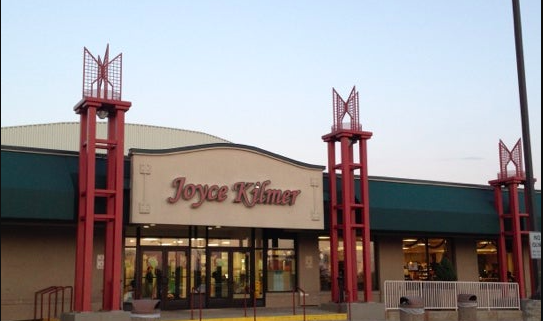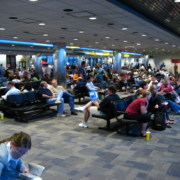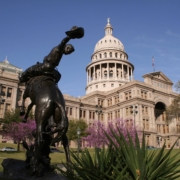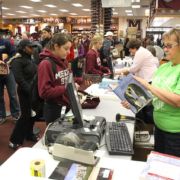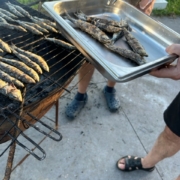White lines, fast cars, and the blur of highway service areas and centers: Touring the Washington, DC to New York City highway corridor during the pandemic
As a partial solution to deal with the boredom and cabin fever brought on by the COVID-19 pandemic, my wife and I periodically went on short haul mini vacations out of town.
In order to get to our destinations, we primarily drove the Washington, DC to New York City highway system and points beyond.
As part of this journey, whether for gas, coffee, or bathroom breaks, we frequently stopped at the numerous service areas strategically located, on this wasteland, mainly beside the I-95 and New Jersey Turnpike. If forced, I could probably recall in my sleep the distances between each of these places.
Over time, just like the pavement in front of us, the areas, the structures that are built on them, and the people who visit and work there blur together.
Sure some of the mostly concrete and rebar structures where restrooms and fast food restaurants are located, are better than others, but there is a certain sameness amongst all of them.
In terms of architecture, there are no Gehry’s or Corbusier’s. I would not be surprised if the architects and engineers who designed these places, secretly conspired to develop an unofficial template that had its origins in the suburban mall food court.
Let’s start with access. You need to leave the highway to visit a service area. Approximately ten miles before you arrive, there are signs alerting the somnambulant drivers that a new service area is soon approaching. The name of the area is pretty generic and uncontroversial. Some are named after a person from the state history (e.g., Clara Barton, Joyce Willmer, etc.) or a geographical namesake (e.g., Chesapeake, Northern, etc.). Then there is the off ramp to the service area, that the driver must negotiate. These stretches of road seem similar in length to airport runways that are accompanied with a litany of signs, mostly instructing drivers to reduce their speed, and directions to gas and the main building.
Inside the service center, restrooms are located on the sides of the food court. They are often big, deep, with lots of white subway tiles, and at least during the pandemic, have these big fans, placed on the floors, generating a deafening sound.
And who’s in there? Other fellow travelers; adults, kids, and probably serial killers. I’ve seen people not just washing their hands, like you are supposed to do in these COVID times, but I’ve seen grown men, often disheveled, rocking a down on their luck vibe, washing their entire bodies from the waste up in front of a sink basin.
Then there’s almost always a guy, an essential worker, wearing a uniform, who is mopping up, even at midnight. Finally, at least in the men’s bathrooms, there’s often large nostalgic looking scale, that you did not notice when you walked in, but you might on your way out, tucked in a corner, that almost no one I’ve seen use.
No self-respecting person visits service centers thinking they’re going to get a gourmet meal. The goal is subsistence. What we mostly find instead are the same fast food chain establishments throughout the service area system like Arby’s Cinnabon, Jersey Mikes, Kentucky Fried Chicken, Nathan’s, Pizza Hut, Roy Rogers, Wendy’s, and almost always an Auntie Anne’s (pretzel place), and hell I even saw an Arthur Treacher’s (the fish and chips food chain that seems to have survived despite its almost total demise in the 1980s). Just for nostalgia sake I was going to order from this dining establishment, but reason grabbed a hold of me.
During the height of the pandemic many of the fast food establishments were closed, or at least gated when we passed through. There may even be some vending machines for travelers that will suffice.
Otherwise there is often a no name convenience mart with overpriced bottled and canned drinks and snacks. Then there is the disappointment of hoping that the Starbucks you want to put some caffeine in your body is open.
Fellow travelers have their own reasons for being on the road and visiting the service centers. Notwithstanding our reasons, it might be that the driver needs to take their dog for a walk or to relieve themselves, they many need or want to stretch their legs, or to throw up. Some of the visitors use the service centers, more specifically items that can be purchased from the food court, as ways to bribe their bored or misbehaving children, if they temporarily shut up until they get to the next service area.
Travelers are a cross section of America. They are immigrant families, couples, single mothers with their kids in tow, girlfriends on a road trip… There is no racial or ethnic stereotype of who visits the service areas and centers.
Now that America is slowly emerging from the pandemic, the service centers, at least during the Memorial day weekend, are becoming more crowded. Most people are wearing masks and that’s a good thing. But there is an element of somnambulism similar to what we see in the suburban shopping malls creeping in.
I believe that this sense of monotony, homogeneity, and failure of differentiation present in the service areas adds to the sense of disconnection that many American travelers, at least the ones that frequent the service centers may feel.
Instead, what if service centers were not simply places where drivers could get gas for their vehicles, relieve themselves, or put some food in their belly, but they were also places that weary travelers could find relaxation like a departure lounge in major Japanese airport or European train station?
What if service areas were destinations rather that places you want to get into and out of as quick as possible? Would more people visit? Take time to relax? What about a destination for food trucks selling interesting food, or a daily farmers market where visitors could purchase fresh produce? (Clearly the parking lots of most of these places are large enough to support this kind of commerce). What if service centers had health clinics or urgent care capabilities; places where you can quickly get vaccinated? What if the service areas had playgrounds that were state of the art, challenging and interesting that children could play at? Implementing these suggestions are not easy, but they can be done with minimum expenditure of resources.
The possibilities are endless.

